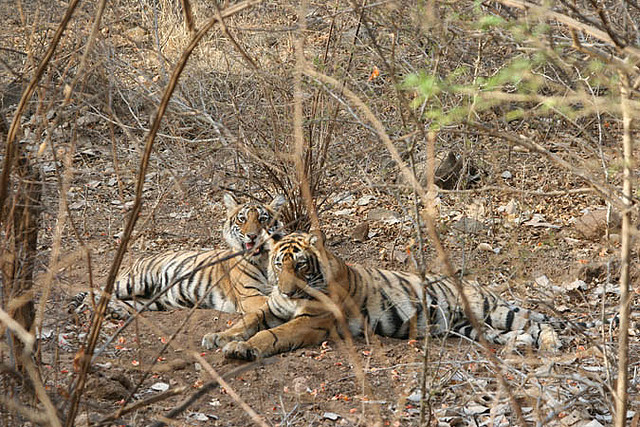
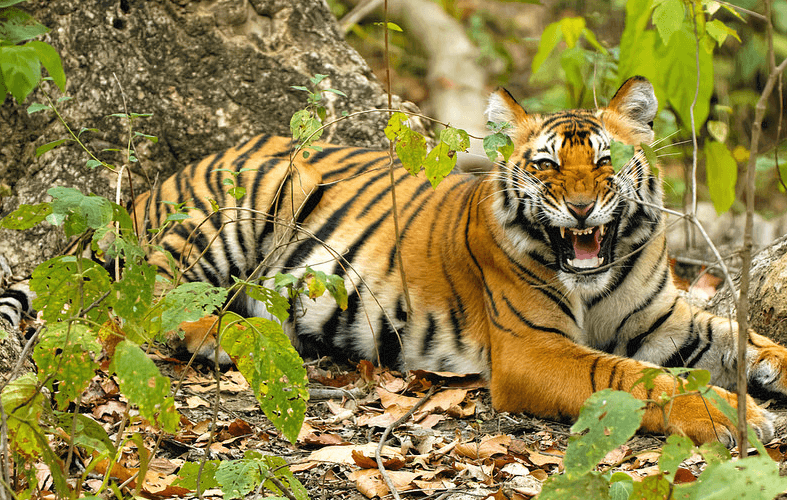
The earth is comprised of millions of varied species and the preservation of the environment is the most demanding issues in today’s scenario. India which is a land of multiple variants of living organisms and plant species, proudly beholds various wild reserves at its different corners. These reserves are not only the perfect habitat of such species but also offer fantabulous locations for wildlife tourism.
Corbett National Park in Uttarakhand is among one of them that has been famed as India’s first and most popular wildlife reserves. It is really very appreciating that the wildlife authority of India is taking many necessary steps in preserving the most extinguishing species of India specially our national animal, the tigers, that has decreased to lesser than 1500.
But ironically, the fact is something else. May be we are very much concerned about the conservation of wild species and the environment but some of the major incidences of tiger poaching have really agitated us and our multiple attempts of "save the tiger mission" is proving gentle to them (poachers). One such incidence has been witnessed in the vast vicinity of Corbett jungle, Tadoba in Maharastra and Bandipur in Karnataka last week; where around 20 tigers were believed to be killed followed by some prayer ceremony. It is being assumed that the Bawaris of the Bijrani range site, deep inside the Corbett, conducted some pujas before sacrificing the wild animals since the jungle officials found cloths, empty box of sweets and ash along with the body parts of the wild animals at the site. However the jungle officials of Corbett are denying the fact explaining the presence of the remnants of the body of jackals or porcupine; but still a red alert has been issued against this inhuman incidence.
By appreciating the fact that Corbett landscape alone holds 214 tigers in its vicinity which is the highest count in the world, the incidence of animal sacrificing is really a serious issue. Since the open landscape of Corbett allows easy access to the poachers whose activities have heightened up recently. Surprisingly, the Tadoba Tiger Reserve is also facing similar kind of threat where the wildlife activists have observed the death of around eight tigers in the last few months.
The most ironic thing that happened recently is that yesterday only we celebrated the World Environment Day (5th of June) that observed so many activists taking many initiatives in different parts of the world. Whether they were actively participating in Green Marathon or participated in different environmental programs; this news of animal sacrificing in the name of tradition and old belief actually deflowered every attempt of environmental conservation.
The individuals still need more vigilant acts to perform so that the world should completely think about the eco-conservatism. We are still waiting for the time to come when our precious wild species will become 100% safe in their own land and thus we will find the flourishing environment.
You may also like to read
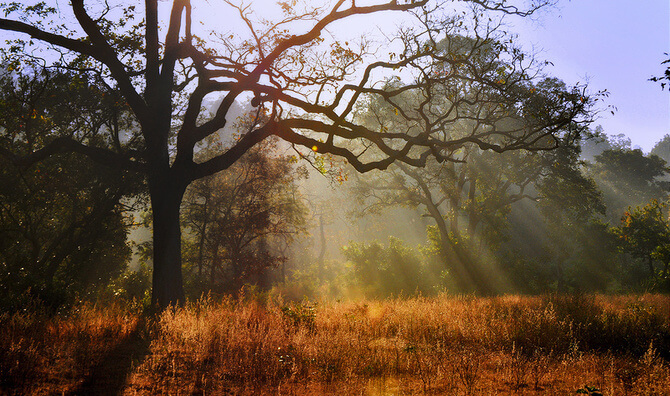
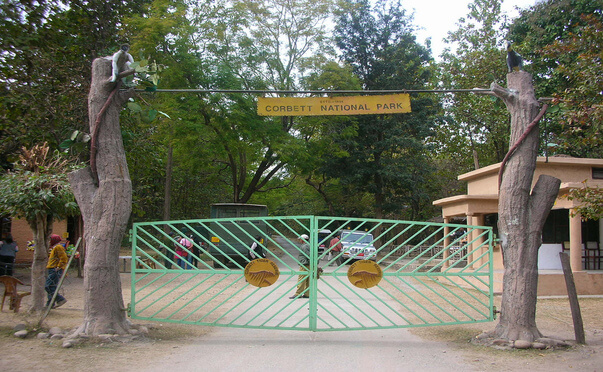 India’s first national park, the Corbett National Park has something different charm that has attracted so many visitors since ages. Set up in 1936, Jim Corbett National Park is an ideal destination for all kinds of animal lovers and for the people who are concerned about the environmental conservation. This unique destination has captured many imaginations with its diverse wildlife and breathtaking landscapes.
This park is destined for tiger reserve but still a visitor can find numerous varieties of flora and fauna in the hill state of Noth India in Uttarakhand. The geographical location and the environmental factors are simply perfect for all wildlife to exist in Corbett tiger reserve. This reserve covers an area of 521 sq km and together with the neighboring Sonanadi Wildlife Sanctuary and Reserve Forest area, forms the Corbett Tiger Reserve over 1288 sq km.
For the convenience of the visitors the Corbett National Park has been categorized into various zones so that they can find a suitable and perfect entry and exit in this area. A tourist can enjoy the visiting of the wild species through various safari zones and there are four major safari zones namely Bijrani Safari zone, Dhikala Safari zone, Durga Devi (Domunda) Safari zone and Jhirnai Safari zone.
India’s first national park, the Corbett National Park has something different charm that has attracted so many visitors since ages. Set up in 1936, Jim Corbett National Park is an ideal destination for all kinds of animal lovers and for the people who are concerned about the environmental conservation. This unique destination has captured many imaginations with its diverse wildlife and breathtaking landscapes.
This park is destined for tiger reserve but still a visitor can find numerous varieties of flora and fauna in the hill state of Noth India in Uttarakhand. The geographical location and the environmental factors are simply perfect for all wildlife to exist in Corbett tiger reserve. This reserve covers an area of 521 sq km and together with the neighboring Sonanadi Wildlife Sanctuary and Reserve Forest area, forms the Corbett Tiger Reserve over 1288 sq km.
For the convenience of the visitors the Corbett National Park has been categorized into various zones so that they can find a suitable and perfect entry and exit in this area. A tourist can enjoy the visiting of the wild species through various safari zones and there are four major safari zones namely Bijrani Safari zone, Dhikala Safari zone, Durga Devi (Domunda) Safari zone and Jhirnai Safari zone.
Bijrani Safari Zone

If a tourist is looking for a day visit at Corbett, Bijrani zone is the most suitable and popular one. This zone is located at a suitable distance from Ramnagar and most of the Corbett resorts perfectly making it the most convenient gate for visiting the national park. This zone is also rich in a good population of tigers and provide a good percentage of sighting to its visitors. The entry gate to the Bijrani safari zone is also known as Amadanda Gate that opens the best path for tourism, buffering and core areas. Safaris in this area is suitable with morning and evening slots. An advanced booking is necessary for the morning slots and full day jeep safaris are also available for enthusiast visitors. For much convenience, there are Bijrani and Malani forest rest house that provides the night stay facility.
Dhikala Safari Zone

Dhikala zone is located at the edge of the broad Patli Dun valley through which the Ramganga flows in numerous channels. This zone provides an outstanding view of this valley with a Kanda ridge on its background. A jeep safari through this region will offer numerous sightings of wild animals, chital, hog deer and numerous grassland bird species and Raptors. The old rest house in Dhilkala region is a historic structure build over a hundred years ago that attracts many visitors to have night stays. The entry gate for Dhikala region is Dhangari.
Domunda Safari Zone
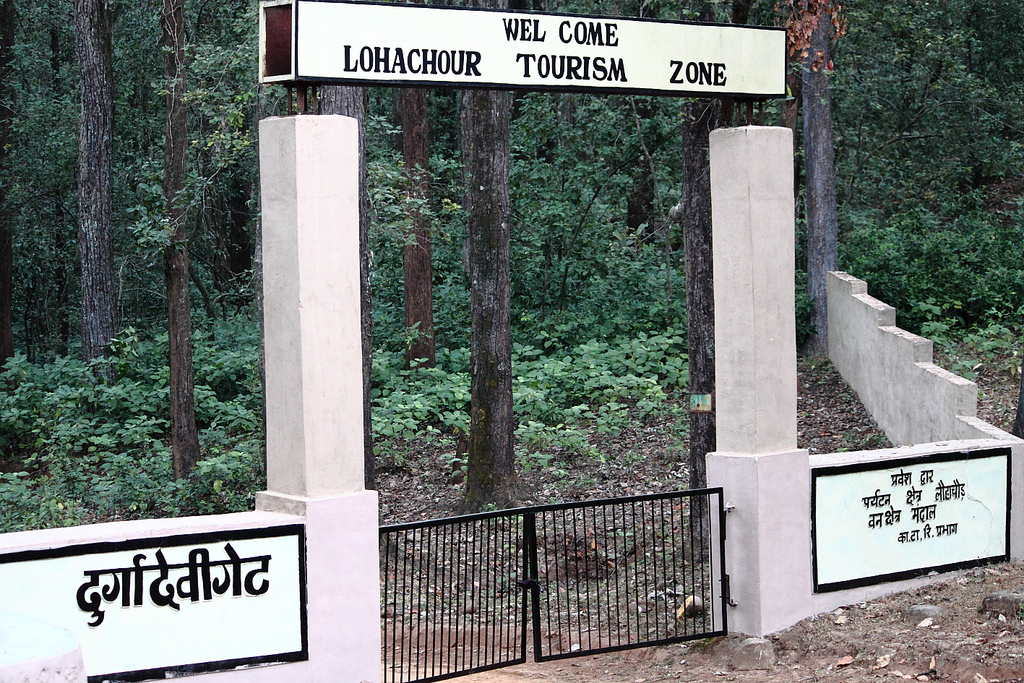
Domunda zone at Jim Corbett Park is although far from Ramnagar at 28 km but is the perfect entrance for adventure lovers. Since this safari zone is a hilly area and is situated along the banks of River Ramganga where the tourists can catch the glimpses of the popular Mahashir fish in the river waters. This zone is also known as Durga Devi tourist zone that offers the best view of the locals through jeep safari. The tourists can also halt at the Corbett museum to get complete information about this famous national park. It is very essential to get the permit issued by the Jim Corbett Park before proceeding to the Durga Devi safari zone.
Jhirna Safari Zone

16 km away from Ramnagar, the Jhirna Safari zone is full of natural beauty and is famous for catching the glances of wild bears during the jeep safari. The morning trips are ideal for this location and one has to book the safari from six days before the actual Corbett safari. This is the only tourist zone which is open for all the 12 months and taking a guide along with this safari will provide you added advantage of a satisfactory Corbett National Park tour.
You may also like to read
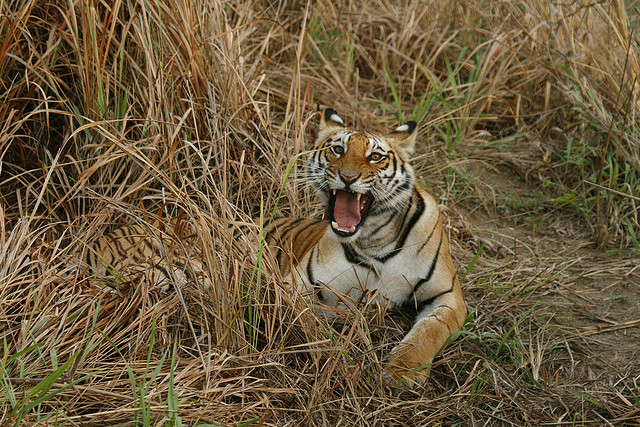
While speaking to the sidelines of the first stock-taking meeting on the Global Tiger Recovery Program, Keshav Varma, the program manager for the World Bank-led scheme revealed something very important. “India has sought assistance of $30 million under the Global Tiger Initiative”. India is against the usage of the bank funds to be used for protection and running of tiger reserves in the country. Although he suggested that the funds will be used for the Wildlife Crime Control Bureau and international collaborations.
The information was discussed in the stock-taking meeting which was hosted by India itself including 150 delegates and experts and everyone witnessed the difference in approach between the World Bank initiative and Indian Government even on the inaugural day of the workshop.
The contradicted proposals were also witnessed at the meeting where Varma demanded of creating wilderness spaces with no human presence and for complete isolation of the wild lives but environment and forest minister Jayanti Natarajan emphasized on the rights of people living in the vicinity of forests with protection and involvement.
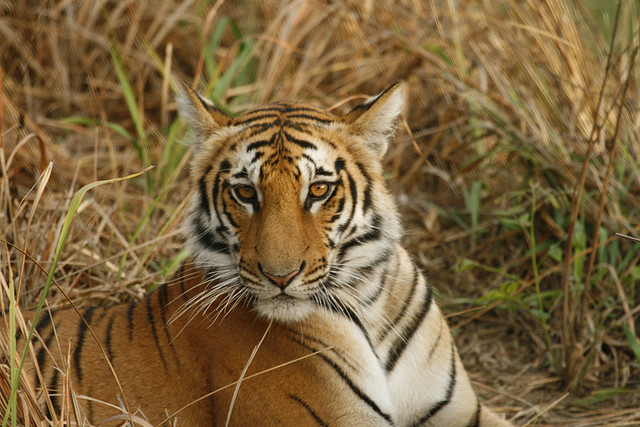 Although he (Natarajan) explained further about the preference of ‘human agenda’ over ‘tiger agenda’ since he believed the involvement of the local people for the sake of wildlife conservation.
As Rajesh Gopal stated, “in earlier cases also, for the save tiger initiative, India supported for the country specific solutions and won the debate on maintaining the issue as a 'sovereign one', member secretary of the National Tiger Conservation Authority.
The workshop to be held is expected to set the agenda for this year to negotiate the common parameters for assessing conservation efforts.
In contradict, Varma focused on the role of the private sectors in conservation efforts the interest on which was not preferred by the government till date. Although many private agencies and corporate have shown interest in getting involved in management of such reserves that helps in improving their branding.
The Union Government will present fresh guidelines in this respect to the Supreme Court about regulating tourism around the tiger reserves within few days.
Although he (Natarajan) explained further about the preference of ‘human agenda’ over ‘tiger agenda’ since he believed the involvement of the local people for the sake of wildlife conservation.
As Rajesh Gopal stated, “in earlier cases also, for the save tiger initiative, India supported for the country specific solutions and won the debate on maintaining the issue as a 'sovereign one', member secretary of the National Tiger Conservation Authority.
The workshop to be held is expected to set the agenda for this year to negotiate the common parameters for assessing conservation efforts.
In contradict, Varma focused on the role of the private sectors in conservation efforts the interest on which was not preferred by the government till date. Although many private agencies and corporate have shown interest in getting involved in management of such reserves that helps in improving their branding.
The Union Government will present fresh guidelines in this respect to the Supreme Court about regulating tourism around the tiger reserves within few days.
You may also like to read
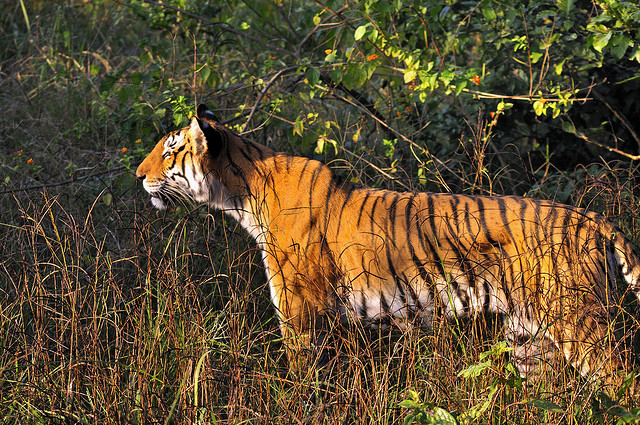
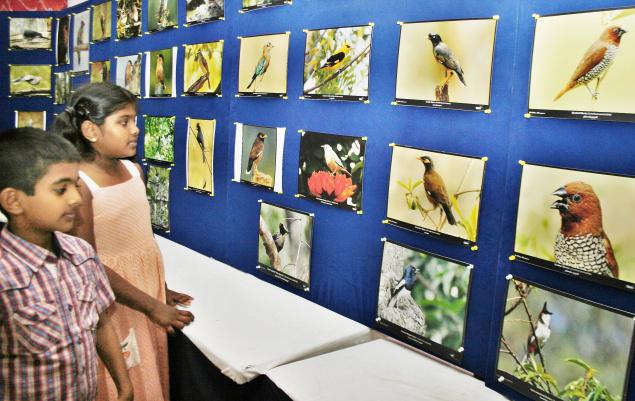 The capital city of Kerala, Tiruvanantpuram is on limelight now days by highlighting the noble cause of wildlife preservation and to create awareness for the conservation of environment with a unique effort. An association of fine art photographers "Light and Shade" is displaying large number of nature and wildlife photographs at Santhigiri Fest 2012 in the city. This effort is being motivated with the only objective of importance of preserving wildlife and nature and to create awareness among the people.
This can be called as the first ever attempt of the “Light and Shade” group for promoting such efforts through pictures and messages.
The founder of the association, T L John firmly believes that the idea of displaying the nature’s photographs will bring the importance of protecting and preserving the nature and wildlife and thus this attempt will certainly help in maintaining the ecological balance of our planet.
John, who is a renowned artist and photographer since 32 years at University of Kerala, collaborated with many other talented artists and renowned photographers for the foundation of the association. This association is directed and guided by Vincy Lopez and Biju Karakkonam, the president and secretary of the association respectively. This effort is going to agitate the ruthless poaching of the wild lives and will become an initiative hand for the conservation of the environment.
The capital city of Kerala, Tiruvanantpuram is on limelight now days by highlighting the noble cause of wildlife preservation and to create awareness for the conservation of environment with a unique effort. An association of fine art photographers "Light and Shade" is displaying large number of nature and wildlife photographs at Santhigiri Fest 2012 in the city. This effort is being motivated with the only objective of importance of preserving wildlife and nature and to create awareness among the people.
This can be called as the first ever attempt of the “Light and Shade” group for promoting such efforts through pictures and messages.
The founder of the association, T L John firmly believes that the idea of displaying the nature’s photographs will bring the importance of protecting and preserving the nature and wildlife and thus this attempt will certainly help in maintaining the ecological balance of our planet.
John, who is a renowned artist and photographer since 32 years at University of Kerala, collaborated with many other talented artists and renowned photographers for the foundation of the association. This association is directed and guided by Vincy Lopez and Biju Karakkonam, the president and secretary of the association respectively. This effort is going to agitate the ruthless poaching of the wild lives and will become an initiative hand for the conservation of the environment.
You may also like to read
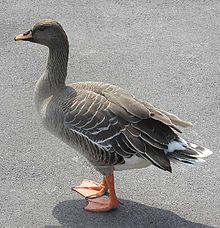
 Corbett National Park, a renowned wild reserve located in Uttarakhand (India), has witnessed a surprising presence of a winter migrant bird: ‘Bean Goose’. A team of bird watchers and researchers has reported the sighting of this Rare Migratory Bird at Jim Corbett in 2011.
According to experts, Bean Goose birds are spotted very rarely. In India, the bird was last seen in Bikaner (Rajasthan) in the year 1948. After 1948, this bird has never been spotted in Rajasthan. Earlier to Jim Corbett National Park, this bird was seen at Hari Barage (Punjab) in the year 2003, Saikhowa National Park (Dibrugarh), and Assam in 2007.
The head of the team of five researchers, Anushree Bhattacharjee explained that earlier they were not confirmed about the species of this bird since a single Bean Goose was being spotted among the flock of species like Bar-headed Goose and Ruddy Shelduck. These flocks are the common winter migrants to the Corbett landscape. Once the team was confirmed about the Bean Goose, they further consulted other experts like the Goose Specialist Group of the Wetlands International and IUCN species survival commission. The team was then affirmed about the species of Ben Goose in March that generally bears two varieties namely the Tundra Bean Goose and the Taiga Bean Goose.
She further explained that the presence of the species of Tundra Bean Goose was confirmed by the experts of the Goose Specialist group, when it was spotted in Tumariya. The species of Ben Goose normally moves to south during winters in the Arctic to the sub-tropical regions including Europe and Asia. The species generally moves to the maximum extent of the south region as China. This was surely a surprising sighting of this rare species that caught the attention of maximum staffs of the Jim Corbett Tiger Reserve.
Corbett National Park, a renowned wild reserve located in Uttarakhand (India), has witnessed a surprising presence of a winter migrant bird: ‘Bean Goose’. A team of bird watchers and researchers has reported the sighting of this Rare Migratory Bird at Jim Corbett in 2011.
According to experts, Bean Goose birds are spotted very rarely. In India, the bird was last seen in Bikaner (Rajasthan) in the year 1948. After 1948, this bird has never been spotted in Rajasthan. Earlier to Jim Corbett National Park, this bird was seen at Hari Barage (Punjab) in the year 2003, Saikhowa National Park (Dibrugarh), and Assam in 2007.
The head of the team of five researchers, Anushree Bhattacharjee explained that earlier they were not confirmed about the species of this bird since a single Bean Goose was being spotted among the flock of species like Bar-headed Goose and Ruddy Shelduck. These flocks are the common winter migrants to the Corbett landscape. Once the team was confirmed about the Bean Goose, they further consulted other experts like the Goose Specialist Group of the Wetlands International and IUCN species survival commission. The team was then affirmed about the species of Ben Goose in March that generally bears two varieties namely the Tundra Bean Goose and the Taiga Bean Goose.
She further explained that the presence of the species of Tundra Bean Goose was confirmed by the experts of the Goose Specialist group, when it was spotted in Tumariya. The species of Ben Goose normally moves to south during winters in the Arctic to the sub-tropical regions including Europe and Asia. The species generally moves to the maximum extent of the south region as China. This was surely a surprising sighting of this rare species that caught the attention of maximum staffs of the Jim Corbett Tiger Reserve.
You may also like to read
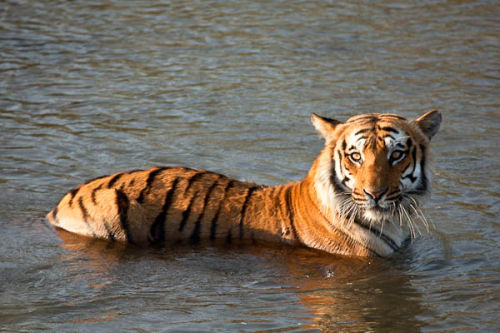
Extinction of species is an accepted fact. Anything which is created is destined to come into extinction at some period of time which is true in several cases of species and the fossil records are the most existed proof of it.
From millions of years back, the cases of extinction have been witnessed and scientists have found five extinction in Earth’s history out of which some cases were so severe that almost 90% of the species were extinguished. The Cretaceous –Tertiary event is the most popular that happened some 63 million years ago and killed off all the dinosaurs to give rise to the birth of mammals. This event was the result of asteroid attack on the earth.
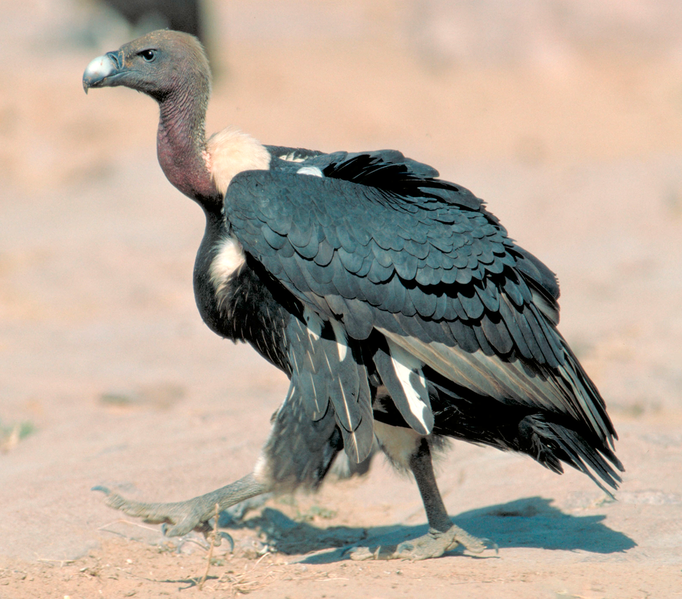
Today we are on the verge of sixth extinction event that began about 50,000 years ago and is now incessantly accelerating. India is among those countries which are encountering wildlife extinction day by day and from the last 90 years and this rate is accelerating at a great pace.
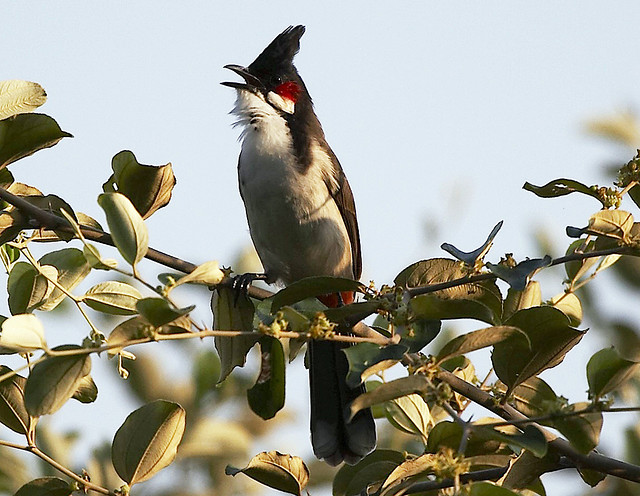
India is a singular land belonging to numerous varieties of wild species as their natural habitat due to its tropical environment. Along with 17 mega diverse countries, India is home to about 60-70% of the world’s biodiversity. With European expansion and urbanization, most of the extinction in India has been witnessed. Apart from that brutal human behaviors to fulfill their necessities and their unauthorized hobbies including shooting and hunting have also led to the loss of the count of these species. India alone is the major cause of loss of number of species of the wild organisms including the Bengal tiger which is ironically our national animal.
This period of extinction is all because of inhuman deeds that have caused the loss of the count. At the turn of 19th century, the number of tiger species was almost 100,000 but with increase in such unlawful acts the number now declined to less than 1500.
This threat of declining animal count is now resulted in many environmental adversities and is surely disturbing the balance of nature. Keeping such issues in mind, the
wildlife conservation in India and WWF established a number of wild reserves and sanctuaries. India’s rich and diverse wildlife is being preserved in 89 national parks, 13 bio reserves and 400+ wildlife sanctuaries. There are several wildlife sanctuaries across India that are being located in a very astonishing environment and is naturally compatible to the different wild lives in the jungle.
Some of the most popular
tiger reserves and wild life sanctuaries are Jim Corbett National Park, Kaziranga National Park, Ranthambore National Park and Gir National Park. These parks bring one and only objective of saving and protecting wild lives. Indian government is trying its best to keep protected the extinguishing species especially the Bengal tigers. These parks offer numerous sites seeing experiences and animal lovers can catch the rare glimpses of the animals. Thus these parks also offer wonderful and adventurous touring spots. A visitor can mesmerize the natural beauty of the environment and can stay at the wonderful resorts arranged by the staffs.
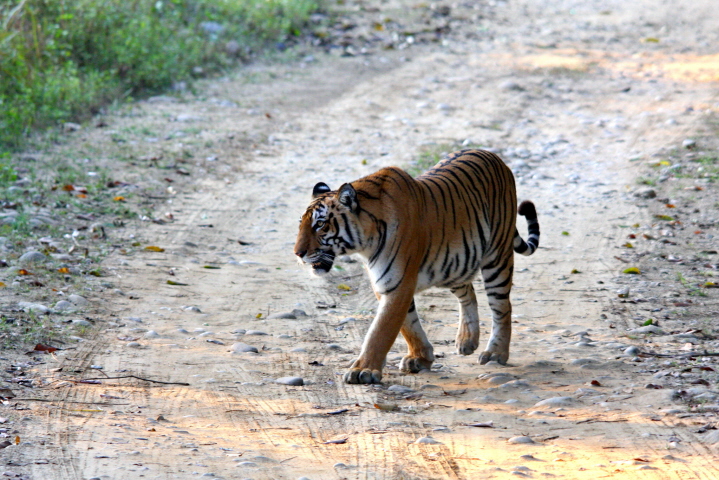
The launch of the “
save the tiger” mission has really inspired millions of people all around India to take further actions in support of the wildlife conservation. Along with that people are encouraged to take further actions to persuade more and more people around them with the help of mass voting, raising funds, writing blogs and articles, performing street plays etc so that people can join this group and take the initiative as much as they can. These actions and support will definitely work some day and the rage of saving the wild life will be provoked more and more by joining the group.
You may also like to read




 India’s first national park, the Corbett National Park has something different charm that has attracted so many visitors since ages. Set up in 1936, Jim Corbett National Park is an ideal destination for all kinds of animal lovers and for the people who are concerned about the environmental conservation. This unique destination has captured many imaginations with its diverse wildlife and breathtaking landscapes.
This park is destined for tiger reserve but still a visitor can find numerous varieties of flora and fauna in the hill state of Noth India in Uttarakhand. The geographical location and the environmental factors are simply perfect for all wildlife to exist in Corbett tiger reserve. This reserve covers an area of 521 sq km and together with the neighboring Sonanadi Wildlife Sanctuary and Reserve Forest area, forms the Corbett Tiger Reserve over 1288 sq km.
For the convenience of the visitors the Corbett National Park has been categorized into various zones so that they can find a suitable and perfect entry and exit in this area. A tourist can enjoy the visiting of the wild species through various safari zones and there are four major safari zones namely Bijrani Safari zone, Dhikala Safari zone, Durga Devi (Domunda) Safari zone and Jhirnai Safari zone.
India’s first national park, the Corbett National Park has something different charm that has attracted so many visitors since ages. Set up in 1936, Jim Corbett National Park is an ideal destination for all kinds of animal lovers and for the people who are concerned about the environmental conservation. This unique destination has captured many imaginations with its diverse wildlife and breathtaking landscapes.
This park is destined for tiger reserve but still a visitor can find numerous varieties of flora and fauna in the hill state of Noth India in Uttarakhand. The geographical location and the environmental factors are simply perfect for all wildlife to exist in Corbett tiger reserve. This reserve covers an area of 521 sq km and together with the neighboring Sonanadi Wildlife Sanctuary and Reserve Forest area, forms the Corbett Tiger Reserve over 1288 sq km.
For the convenience of the visitors the Corbett National Park has been categorized into various zones so that they can find a suitable and perfect entry and exit in this area. A tourist can enjoy the visiting of the wild species through various safari zones and there are four major safari zones namely Bijrani Safari zone, Dhikala Safari zone, Durga Devi (Domunda) Safari zone and Jhirnai Safari zone.
 Dhikala zone is located at the edge of the broad Patli Dun valley through which the Ramganga flows in numerous channels. This zone provides an outstanding view of this valley with a Kanda ridge on its background. A jeep safari through this region will offer numerous sightings of wild animals, chital, hog deer and numerous grassland bird species and Raptors. The old rest house in Dhilkala region is a historic structure build over a hundred years ago that attracts many visitors to have night stays. The entry gate for Dhikala region is Dhangari.
Dhikala zone is located at the edge of the broad Patli Dun valley through which the Ramganga flows in numerous channels. This zone provides an outstanding view of this valley with a Kanda ridge on its background. A jeep safari through this region will offer numerous sightings of wild animals, chital, hog deer and numerous grassland bird species and Raptors. The old rest house in Dhilkala region is a historic structure build over a hundred years ago that attracts many visitors to have night stays. The entry gate for Dhikala region is Dhangari.
 Domunda zone at Jim Corbett Park is although far from Ramnagar at 28 km but is the perfect entrance for adventure lovers. Since this safari zone is a hilly area and is situated along the banks of River Ramganga where the tourists can catch the glimpses of the popular Mahashir fish in the river waters. This zone is also known as Durga Devi tourist zone that offers the best view of the locals through jeep safari. The tourists can also halt at the Corbett museum to get complete information about this famous national park. It is very essential to get the permit issued by the Jim Corbett Park before proceeding to the Durga Devi safari zone.
Jhirna Safari Zone
Domunda zone at Jim Corbett Park is although far from Ramnagar at 28 km but is the perfect entrance for adventure lovers. Since this safari zone is a hilly area and is situated along the banks of River Ramganga where the tourists can catch the glimpses of the popular Mahashir fish in the river waters. This zone is also known as Durga Devi tourist zone that offers the best view of the locals through jeep safari. The tourists can also halt at the Corbett museum to get complete information about this famous national park. It is very essential to get the permit issued by the Jim Corbett Park before proceeding to the Durga Devi safari zone.
Jhirna Safari Zone
 16 km away from Ramnagar, the Jhirna Safari zone is full of natural beauty and is famous for catching the glances of wild bears during the jeep safari. The morning trips are ideal for this location and one has to book the safari from six days before the actual Corbett safari. This is the only tourist zone which is open for all the 12 months and taking a guide along with this safari will provide you added advantage of a satisfactory Corbett National Park tour.
16 km away from Ramnagar, the Jhirna Safari zone is full of natural beauty and is famous for catching the glances of wild bears during the jeep safari. The morning trips are ideal for this location and one has to book the safari from six days before the actual Corbett safari. This is the only tourist zone which is open for all the 12 months and taking a guide along with this safari will provide you added advantage of a satisfactory Corbett National Park tour.

 Although he (Natarajan) explained further about the preference of ‘human agenda’ over ‘tiger agenda’ since he believed the involvement of the local people for the sake of wildlife conservation.
As Rajesh Gopal stated, “in earlier cases also, for the
Although he (Natarajan) explained further about the preference of ‘human agenda’ over ‘tiger agenda’ since he believed the involvement of the local people for the sake of wildlife conservation.
As Rajesh Gopal stated, “in earlier cases also, for the 
 The capital city of Kerala, Tiruvanantpuram is on limelight now days by highlighting the noble cause of
The capital city of Kerala, Tiruvanantpuram is on limelight now days by highlighting the noble cause of 
 Corbett National Park, a renowned wild reserve located in Uttarakhand (India), has witnessed a surprising presence of a winter migrant bird: ‘Bean Goose’. A team of bird watchers and researchers has reported the sighting of this Rare Migratory Bird at Jim Corbett in 2011.
According to experts, Bean Goose birds are spotted very rarely. In India, the bird was last seen in Bikaner (Rajasthan) in the year 1948. After 1948, this bird has never been spotted in Rajasthan. Earlier to Jim Corbett National Park, this bird was seen at Hari Barage (Punjab) in the year 2003, Saikhowa National Park (Dibrugarh), and Assam in 2007.
The head of the team of five researchers, Anushree Bhattacharjee explained that earlier they were not confirmed about the species of this bird since a single Bean Goose was being spotted among the flock of species like Bar-headed Goose and Ruddy Shelduck. These flocks are the common winter migrants to the Corbett landscape. Once the team was confirmed about the Bean Goose, they further consulted other experts like the Goose Specialist Group of the Wetlands International and IUCN species survival commission. The team was then affirmed about the species of Ben Goose in March that generally bears two varieties namely the Tundra Bean Goose and the Taiga Bean Goose.
She further explained that the presence of the species of Tundra Bean Goose was confirmed by the experts of the Goose Specialist group, when it was spotted in Tumariya. The species of Ben Goose normally moves to south during winters in the Arctic to the sub-tropical regions including Europe and Asia. The species generally moves to the maximum extent of the south region as China. This was surely a surprising sighting of this rare species that caught the attention of maximum staffs of the
Corbett National Park, a renowned wild reserve located in Uttarakhand (India), has witnessed a surprising presence of a winter migrant bird: ‘Bean Goose’. A team of bird watchers and researchers has reported the sighting of this Rare Migratory Bird at Jim Corbett in 2011.
According to experts, Bean Goose birds are spotted very rarely. In India, the bird was last seen in Bikaner (Rajasthan) in the year 1948. After 1948, this bird has never been spotted in Rajasthan. Earlier to Jim Corbett National Park, this bird was seen at Hari Barage (Punjab) in the year 2003, Saikhowa National Park (Dibrugarh), and Assam in 2007.
The head of the team of five researchers, Anushree Bhattacharjee explained that earlier they were not confirmed about the species of this bird since a single Bean Goose was being spotted among the flock of species like Bar-headed Goose and Ruddy Shelduck. These flocks are the common winter migrants to the Corbett landscape. Once the team was confirmed about the Bean Goose, they further consulted other experts like the Goose Specialist Group of the Wetlands International and IUCN species survival commission. The team was then affirmed about the species of Ben Goose in March that generally bears two varieties namely the Tundra Bean Goose and the Taiga Bean Goose.
She further explained that the presence of the species of Tundra Bean Goose was confirmed by the experts of the Goose Specialist group, when it was spotted in Tumariya. The species of Ben Goose normally moves to south during winters in the Arctic to the sub-tropical regions including Europe and Asia. The species generally moves to the maximum extent of the south region as China. This was surely a surprising sighting of this rare species that caught the attention of maximum staffs of the 

 India is a singular land belonging to numerous varieties of wild species as their natural habitat due to its tropical environment. Along with 17 mega diverse countries, India is home to about 60-70% of the world’s biodiversity. With European expansion and urbanization, most of the extinction in India has been witnessed. Apart from that brutal human behaviors to fulfill their necessities and their unauthorized hobbies including shooting and hunting have also led to the loss of the count of these species. India alone is the major cause of loss of number of species of the wild organisms including the Bengal tiger which is ironically our national animal.
India is a singular land belonging to numerous varieties of wild species as their natural habitat due to its tropical environment. Along with 17 mega diverse countries, India is home to about 60-70% of the world’s biodiversity. With European expansion and urbanization, most of the extinction in India has been witnessed. Apart from that brutal human behaviors to fulfill their necessities and their unauthorized hobbies including shooting and hunting have also led to the loss of the count of these species. India alone is the major cause of loss of number of species of the wild organisms including the Bengal tiger which is ironically our national animal.
 The launch of the “
The launch of the “